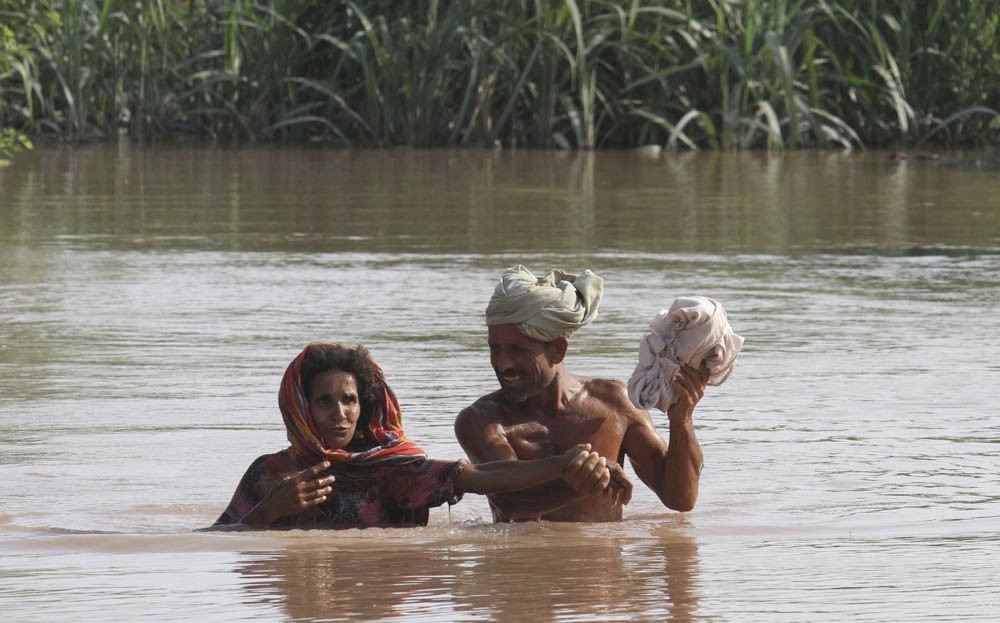
Pakistan, where agriculture is the base of the economy, cannot afford to lose sight of the consequences of climate change

Pakistan is vulnerable to a number of adverse natural events and has experienced a wide range of disasters over the past 40 years, including floods, earthquakes, droughts and cyclones. These hazards are due to an active floodplain fed by snow and glacial melt from three mountain ranges -- Himalayas, Karakoram and Hindu Kush, its location on a seismically active geological plate, a predominantly semi-arid landmass and a coastline frequented by cyclonic events.
Exposure and vulnerability to hazards is further exacerbated by a rapid population growth, growing urbanisation, environmental degradation and shifting climatic patterns that can result in the occurrence of increasingly severe natural disasters.
According to a World Bank report that appeared in 2015, over the past decade, damages and losses resulting from natural disasters in Pakistan have exceeded USD 18 billion. As the population and asset base of Pakistan increases, so does its economic exposure to natural disasters.
Pakistan encounters major challenges arising from climate disasters. World Bank’s report further tells that flooding is causing an estimated annual economic impact of between 3 and 4 percent of the federal budget. "On average, approximately 3 million people are affected by natural catastrophes each year in Pakistan, which equates to approximately 1.6 percent of the total population."
According to an analysis of historical natural disaster data, presented at the "ICIB Pak Media Dialogue" by International Water Management Institute at Bhurban last week, since 1973 approximately 77 per cent of all the people affected by natural disasters were impacted by flooding events. The annual economic impact of flooding is estimated between USD 1.2 billion and USD 1.8 billion, equivalent to between 0.5 percent and 0.8 percent of national GDP; however, there is a threat that a major flood event (occurring, on average, once every 100 years) could cause losses in excess of USD 15.5 billion, which equates to around 7 percent of national GDP, equivalent to almost 40 percent of the Federal Budget.
The economic cost is accelerating due to damages and disasters triggered by climate change. Vision 2025 looks Pakistan to become a middle-income country by increasing per capita income to $8,160. If global temperatures rise higher than two degrees Celsius it will be difficult for the country to cross the $6,526 threshold. In such conditions, there is a dire need to work on climate resilience.
Read also: Pakistan’s vulnerability
Director General Pakistan Meteorology Department (PMD) Dr. Ghulam Rasool says that unfortunately the required scale of work on climate resilience is not being done.
"An efficient early warning system can be very effective but we are still relying on 25 years old technology," says Rasool. "At present, Pakistan has 7 radars, installed about 25 years ago, and keeping in view the current needs, they are insufficient, we need at least 20 radars with integrated networking."
He is of the view that weather monitoring units equipped with automatic weather stations should be built at the tehsil level for better monitoring and risk reduction.
Read also: Editorial
Agriculture is the base of Pakistan’s economy and changing weather patterns are threatening our crops. A cotton exporter country, Pakistan has already imported cotton worth $4 billion in 2015-16. If we want to save our agri-economy, experts say, we will have to change our thinking according to climate change. "We need to develop heat tolerant and drought resistant varieties as the temperature is expected to rise 2 degrees by 2069," says Dr Ashfaq Ahmad Chattha, Head climate change research group at the University of Agriculture Faisalabad.
"In flood prone areas we can cultivate crops like rice and sugarcane but cotton and small vegetables which cannot survive in floods should not be cultivated in such areas," he says.
Chattha emphasises the need for adopting modern techniques like drip irrigation and sprinkling irrigation for better water management and resilience.
Water management is Pakistan’s major issue as far as climate change is concerned. Each province has its own issues, ranging from glacial melt to recurring droughts, from frequent flooding to depleted groundwater. Add changing monsoon patterns to this daunting list, and patterns of trans-boundary flooding emerge.